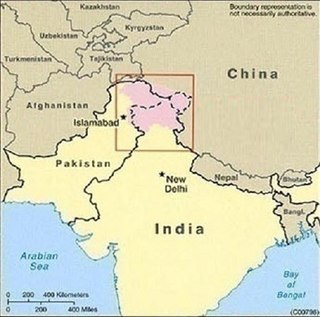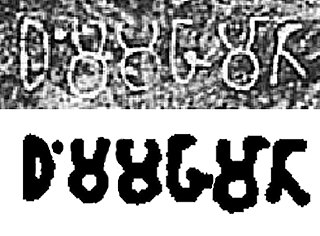Related Research Articles

Ashoka, also known as Ashoka the Great, was an Indian emperor of the Maurya Empire, son of Bindusara, who ruled almost all of the Indian subcontinent from c. 268 to 232 BCE. Ashoka promoted the spread of Buddhism across ancient Asia. Considered by many to be one of India's greatest emperors, Ashoka expanded Chandragupta's empire to reign over territory stretching from present-day Afghanistan in the west to present-day Bangladesh in the east. It covered the entire Indian subcontinent except for parts of present-day Tamil Nadu. The empire's capital was Pataliputra, with provincial capitals at Takshashila and Ujjain. Ashoka, after the war of Kalinga, was upset with the bloodshed and vowed to never again wage a war of conquest. He patronized Buddhism during his reign.

Chandragupta Maurya was a ruler of Iron Age South Asia who expanded a geographically-extensive kingdom based in Magadha and founded the Maurya dynasty. He reigned from 320 BCE to 298 BCE. The Maurya kingdom expanded to become an empire that reached its peak under the reign of his grandson, Asoka, from 268 BCE to 231 BCE. The nature of the political formation that existed in Chandragupta's time is not certain. The Mauryan empire was a loose-knit empire.

Bindusara, also Amitraghāta or Amitrakhāda or Amitrochates was the second Mauryan emperor of India. He was the son of the dynasty's founder Chandragupta and the father of its most famous ruler Ashoka. Bindusara's life is not documented as well as the lives of these two emperors: much of the information about him comes from legendary accounts written several hundred years after his death.

The Maurya Empire was a geographically extensive Iron Age historical power in South Asia based in Magadha, founded by Chandragupta Maurya in 322 BCE, and existing in loose-knit fashion until 185 BCE. The Maurya Empire was centralized by the conquest of the Indo-Gangetic Plain, and its capital city was located at Pataliputra. Outside this imperial center, the empire's geographical extent was dependent on the loyalty of military commanders who controlled the armed cities sprinkling it. During Ashoka's rule the empire briefly controlled the major urban hubs and arteries of the Indian subcontinent excepting the deep south. It declined for about 50 years after Ashoka's rule, and dissolved in 185 BCE with the assassination of Brihadratha by Pushyamitra Shunga and foundation of the Shunga dynasty in Magadha.

Pushyamitra Shunga was the founder and first ruler of the Shunga Empire which he established against the Maurya Empire.

The Edicts of Ashoka are a collection of more than thirty inscriptions on the pillars, as well as boulders and cave walls, attributed to Emperor Ashoka of the Mauryan Empire who reigned from 268 BCE to 232 BCE. Ashoka used the expression Dhaṃma Lipi to describe his own Edicts. These inscriptions were dispersed throughout the areas of modern-day Bangladesh, India, Nepal, Afghanistan and Pakistan, and provide the first tangible evidence of Buddhism. The edicts describe in detail Ashoka's view on dhamma, an earnest attempt to solve some of the problems that a complex society faced. According to the edicts, the extent of Buddhist proselytism during this period reached as far as the Mediterranean, and many Buddhist monuments were created.

Karuvaki was the second queen of the third Mauryan emperor, Ashoka. She was also the mother of Ashoka's son, Prince Tivala.
Kunala was a son of Emperor Ashoka and Queen Padmavati and the presumptive heir to Ashoka, thus the heir to the Mauryan Empire which once ruled almost all of the Indian subcontinent. After the departure of Mahendra, Ashoka's eldest son, he was supposed to be the heir to the empire, but was blinded by his step-mother, Tishyaraksha, at a young age in jealousy. While he was not able to take the throne, his son, Samprati, became his heir.

Avanti was an ancient Indian Mahajanapada, roughly corresponding to the present-day Malwa region. According to the Buddhist texts, the Anguttara Nikaya, Avanti was one of the solasa mahajanapadas of the 6th century BCE. The janapada was divided into two parts by the Vindhyas, the northern part had its capital at Ujjayini and the southern part had its centre at Mahishmati.
The Ashokavadana is an Indian Sanskrit-language text that describes the birth and reign of the Maurya Emperor Ashoka. It contains legends as well as historical narratives, and glorifies Ashoka as a Buddhist emperor whose only ambition was to spread Buddhism far and wide.

The Major Rock Edicts of Indian Emperor Ashoka refer to 14 separate major Edicts of Ashoka which are significantly detailed and represent some of the earliest dated rock inscriptions of any Indian monarch. These edicts are preceded chronologically by the Minor Rock Edicts.

Aparanta, or Aparantaka was a geographical region of ancient India. It corresponded to the northern part of the Konkan region on the western coast of India. English civil servant-turned-historian J. F. Fleet believed that the Aparanta region included Kathiawad, Kutch, and Sindh, beside Konkan. However, historical records make it clear that the extent of Aparanta was much smaller.
Ashoka's Hell was, according to legend, an elaborate torture chamber disguised as a beautiful palace full of amenities such as exclusive baths and decorated with flowers, fruit trees and ornaments. It was built by Emperor Ashoka in Pataliputra, the capital city of the Maurya Empire. The torture palace's legend is detailed in the Ashokavadana, the text that describes Emperor Ashoka's life through both legendary and historical accounts.
Vitashoka or Tissa was a prince of the Maurya Empire as the only full-brother of Ashoka, and the only brother left alive by Ashoka. According to Divyavadana, he was a follower of the Tirthikas and used to criticize the Buddhist monks for living a comfortable life. He was made to sit on the throne by the courtiers. When Ashoka found out about that, he persuaded Vitashoka to become a Buddhist.

Dhamma is a set of edicts that formed a policy of the Mauryan emperor Ashoka, who succeeded to the Mauryan throne in modern-day India around 269 B.C.E. Ashoka is considered one of the greatest kings of ancient India for his policies of public welfare.

Chakravartin Ashoka Samrat is a 2015 Indian historical drama TV series that aired on Colors TV from 2 February 2015 to 7 October 2016. The show was created and written by author and screenwriter Faizan Mohammad and cast by Radhesh More. It stars Mohit Raina as Ashoka with Siddharth Nigam portraying the young version of the character.

Jalauka was, according to the 12th century Kashmiri chronicle, the Rajatarangini, a king of Kashmir, who cleared the valley of oppressing Malechas. Jaluka was reputed to have been an active and vigorous king of Kashmir, who expelled certain intrusive foreigners, and conquered the plains as far as Kannauj. Jalauka was devoted to the worship of the Hindu god Shiva and the Divine Mothers, in whose honour he and his queen, Isana-devi, erected many temples in places which can be identified.

The Major Pillar Edicts of Indian Emperor Ashoka refer to seven separate major Edicts of Ashoka inscribed on columns, the Pillars of Ashoka, which are significantly detailed and are among the earliest dated inscriptions of any Indian monarch. A full English translation of the Edicts was published by Romilla Thapar.

A Mahamatra was an "officer of morality" established by the Indian Emperor Ashoka. Their full title was Dhaṃma Mahāmātā, the "Inspectors of the Dharma". They were apparently a class of senior officials who were in charge various aspects of administration and justice.

King Ashoka, of the Gonandiya dynasty, was a king of the region of Kashmir according to Kalhana, the 12th century CE historian who wrote the Rajatarangini.
References
- 1 2 Ananda W. P. Guruge 1993, p. 19.
- 1 2 3 Radhakumud Mookerji 1962, p. 2.
- ↑ Upinder Singh 2008, p. 332.
- ↑ Nayanjot Lahiri 2015, p. 323:"In the Ashokavadana, Ashoka's mother is not named."
- ↑ John S. Strong 1989, pp. 204–205.
- ↑ Romila Thapar 1961, p. 20.
- ↑ John S. Strong 1989, p. 204.
- ↑ Nayanjot Lahiri 2015, pp. 31–32.
- 1 2 John S. Strong 1989, p. 205.
- ↑ Romila Thapar 1961, p. 26.
- ↑ Playing onscreen mother was a challenge: Pallavi Subhash, IBN Live, 31 January 2015, archived from the original on 2 February 2015
Bibliography
- Ananda W. P. Guruge (1993). Aśoka, the Righteous: A Definitive Biography. Central Cultural Fund. ISBN 978-955-9226-00-0.
- John S. Strong (1989). The Legend of King Aśoka: A Study and Translation of the Aśokāvadāna. Motilal Banarsidass. ISBN 978-81-208-0616-0 . Retrieved 30 October 2012.
- Nayanjot Lahiri (5 August 2015). Ashoka in Ancient India. Harvard University Press. ISBN 978-0-674-05777-7.
- Radhakumud Mookerji (1962). Aśoka (3rd revised ed.). Delhi: Motilal Banarsidass. ISBN 978-81-208-0582-8.
- Upinder Singh (2008). A History of Ancient and Early Medieval India: From the Stone Age to the 12th Century. Pearson Education India. ISBN 978-81-317-1120-0.